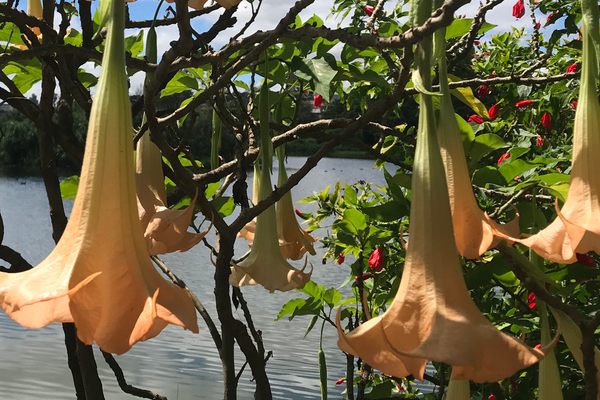Avenue of the Baobabs
The centuries old trees lining both sides of this dirt road may become Madagascar's first natural monument.
The dirt road on the west coast of Madagascar linking Morondava and Belo Tsiribihina is framed by dozens of rare and ancient baobab trees creating a setting so beautiful and unique that it may become the country’s first official natural monument.
These giant, dry season-deciduous trees (members of the Mallow family), many of which are more than 800 years old with trunks that are over 150 feet around did not always stand alone. At one time the trees dotting the lane were part of a rich forest of the trees and other plants, but the encroachment of modern civilization and increasing populations in the area led to massive deforestation leaving the remaining baobabs to stand in relative isolation. There are also a handful of the ancient trees remaining in the outlying areas but both the trees along the road otherwise are under near-constant threat of destruction. When Arab seafarers first visited a bit over 1000 years ago, they said the devil ripped them out of the ground and put them back upside down, for their canopies resemble roots.
Thankfully, private organizations have taken notice of the site and are now promoting efforts to have the avenue protected, making it the country’s first nationally recognized natural monument, so that the trees might survive for another 800 years to come. Baobabs are incredibly useful plants, their trunks are harmlessly tapped for water during the dry season and have even been lived in, the young leaves (when reachable) are eaten as a salad vegetable when little else is available, and the nutritious sour brown pulp (tasting somewhat like tamarind) of the hard-shelled fruits is made into a pleasant summertime beverage all over Africa, and is also an ingredient in a Senegalese peanut and couscous dessert pudding called Ngalakh. These trees are popular in novelty gardens around the warmer parts of the Mediterranean and sometimes show up in southern California, they are hardy to plant hardiness zone 10a (minimum of 30 to 35 F) and will not survive more than 8 to 10 hours in the snow. Another peculiar fact is that baobabs blossom, but the blooming period is very short, only about 24 hours.
Know Before You Go
Avenue of the Baobabs is often visited in a combination with Kirindy Forest Reserve. The departure point is Morondava, which offers modest hotels and restaurants.
Community Contributors
Added by
Edited by
The Atlas Obscura Podcast is Back!






























Follow us on Twitter to get the latest on the world's hidden wonders.
Like us on Facebook to get the latest on the world's hidden wonders.
Follow us on Twitter Like us on Facebook